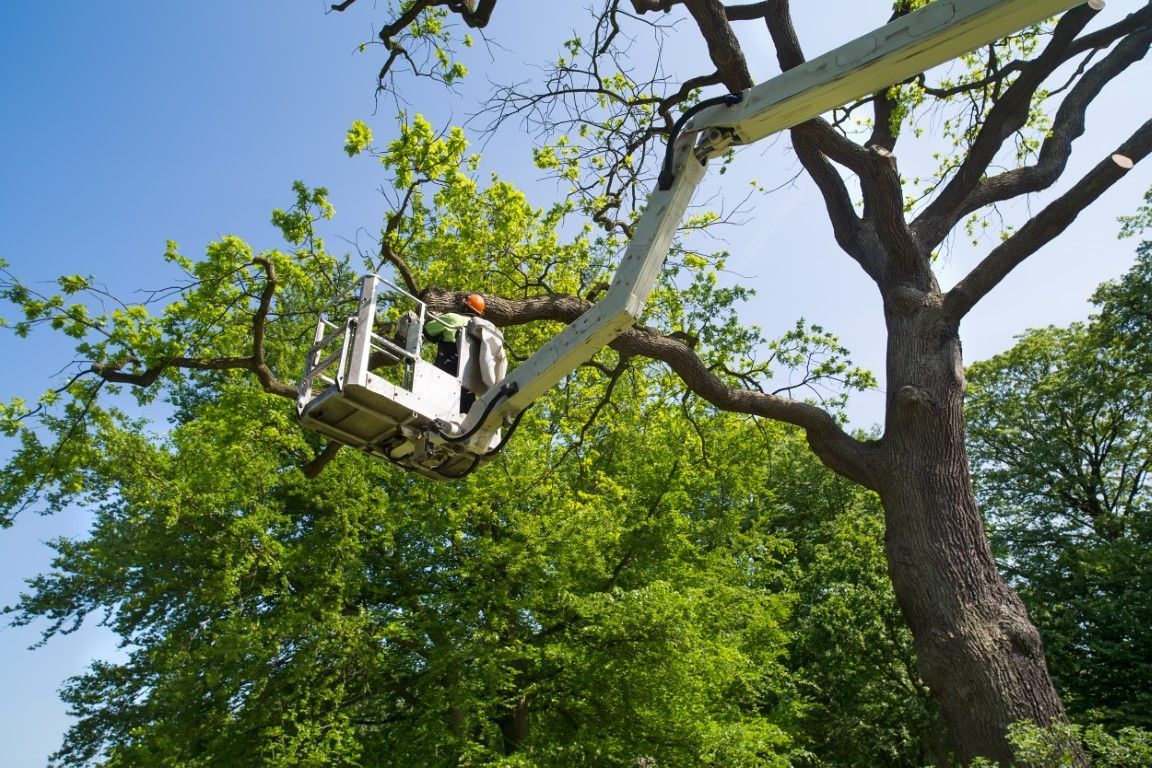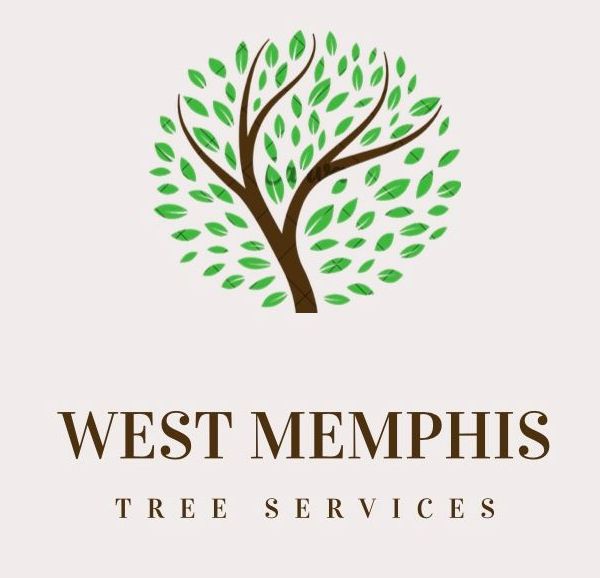West Memphis Tree Service
Tree Trimming in West Memphis AR
Tree trimming is a crucial aspect of maintaining the health and appearance of trees in both residential and commercial landscapes. It involves selectively removing branches to improve the tree's structure, encourage healthy growth, and eliminate dead or hazardous limbs. When done correctly, tree trimming enhances not only the safety of the property but also the tree's aesthetic appeal. The process ensures that branches grow in the right direction, preventing interference with power lines, buildings, or other trees. Beautiful trees are part of the natural landscape, regular trimming plays a significant role in keeping these natural assets thriving.
Difference Between Trimming and Pruning
Although people often use trimming and pruning interchangeably, there are distinct differences between the two practices. Trimming is primarily focused on improving a tree’s visual appearance by shaping its canopy and removing overgrown or unbalanced branches. It’s more cosmetic in nature and helps trees maintain their structure and shape over time.
On the other hand, pruning focuses on the health and longevity of the tree. It involves cutting away dead, diseased, or damaged branches to prevent potential hazards and promote better airflow and sunlight exposure, which are vital for healthy growth. Both trimming and pruning are essential, but understanding when to apply each can make a big difference in the outcome of tree care.
Common Tools Used in Tree Trimming
Tree trimming requires the right set of tools to ensure the job is done safely and efficiently. Some of the most common tools used in this process include hand pruners, which are ideal for cutting small branches and twigs, and loppers, which are designed for thicker branches.
Pole saws allow the trimming of higher branches without the need for a ladder, while pruning saws help remove larger limbs. For more extensive work, professionals often rely on chainsaws, especially when dealing with large or mature trees. Proper maintenance and use of these tools are crucial for both effectiveness and safety during the trimming process.

FREE 100% INSTANT QUOTE!
Different Types of Tree Trimming
Tree trimming comes in several forms, each serving a unique purpose. Fine pruning involves the removal of small, delicate branches to improve the tree’s appearance. Standard trimming, which is more extensive, is done to enhance the tree's structure and overall growth. Hazard trimming is focused on safety, removing branches that pose a risk to nearby structures or utility lines. Crown reduction is a more intensive type of trimming used when a tree has grown too large for its location. In this process, the size of the tree’s canopy is carefully reduced, ensuring that the tree remains balanced without losing its natural beauty. Each type of trimming requires different techniques and a good understanding of tree biology.
Best Time to Trim Trees
Timing is key when it comes to tree trimming. While it is possible to trim trees throughout the year, certain times are more beneficial for different types of trees. Generally, the dormant season—fall and winter—is the best time to trim most trees. During this period, trees are not actively growing, which means less sap loss and a lower risk of attracting pests or diseases to the open wounds created by trimming. Spring and summer trimming can be effective for removing dead or dangerous branches, but it may also stimulate new growth that is less hardy. Climate and weather conditions can also affect the best trimming schedule, making it advisable to consult with local professionals who understand the specific needs of the area’s trees.
Common Mistakes in Tree Trimming
Although trimming trees may seem straightforward, there are several mistakes that homeowners and inexperienced trimmers often make. One common error is over-trimming, which can leave the tree vulnerable to disease or stunt its growth. Removing too many branches at once weakens the tree, making it harder for it to recover. Another mistake is topping, which involves cutting off the top of the tree to reduce its size. This method not only ruins the tree’s natural shape but also encourages weak, rapid growth that can lead to future problems. Incorrect use of tools can also cause damage. For instance, making improper cuts or using dull equipment can leave jagged edges that don’t heal properly. Trimming at the wrong time of year or without considering the tree’s species are other common pitfalls that can have long-term consequences for the tree’s health.
Tree trimming is not just about maintaining appearances—it's about ensuring the health, safety, and longevity of your trees. If you need professional
tree trimming services in West Memphis, AR, we’re here to help. With expert knowledge and the right tools, we can provide thorough and precise trimming that keeps your trees looking great and growing strong. Don't wait until a small problem becomes a bigger issue—contact us today to schedule your tree trimming service and ensure your trees are in the best hands.
The Role of Tree Trimming in Preventing Storm Damage
Tree trimming might seem like a routine task, but it plays a crucial role in safeguarding your property from storm damage. As we head into stormy seasons, it's important to understand how proper tree maintenance can be a proactive measure to protect your home and landscape. Storms, whether they're strong winds, heavy rains, or snow, can pose serious risks to trees and, consequently, to your property. Tree trimming helps mitigate these risks by addressing several key factors:

Reducing Weak Branches
Over time, trees can develop weak or dead branches that are more susceptible to breaking during storms. These branches can become hazardous if they fall on your home, vehicles, or other structures. Regular trimming removes these weak branches, reducing the risk of them causing damage.
Improving Tree Structure
Proper trimming helps improve the overall structure of a tree. By removing crossing or rubbing branches, a tree’s structure becomes more balanced and less likely to break under stress. A well-maintained tree is more resilient to strong winds and heavy snow.
Minimizing Potential Hazards
Trees that are too close to your home or power lines can create dangerous situations during storms. Trimming these trees back from structures and utilities reduces the risk of damage. Additionally, trimming helps prevent trees from becoming a fire hazard during dry conditions.
Enhancing Airflow
Dense, overgrown trees can trap wind, increasing the likelihood of branches breaking. Regular trimming allows for better airflow through the canopy, reducing wind resistance and lowering the chance of storm damage.
Health of the Tree
Keeping trees healthy is a crucial aspect of storm prevention. Trimming helps remove diseased or infested branches, which can weaken the tree. A healthy tree is less likely to suffer from storm damage compared to one that is struggling with pests or disease.
By investing time and effort into regular tree trimming, you can significantly reduce the risks associated with storm damage. Not only does this maintenance work protect your property, but it also ensures that your trees remain healthy and attractive.
Don’t wait for the next storm to find out if your trees are at risk. Contact us today to schedule a professional tree trimming service. Our experts are ready to help you assess your trees, provide necessary trims, and offer guidance on keeping your property safe. Taking proactive steps now can save you from costly repairs and keep your home and landscape secure during stormy weather.
How to Prepare Your Trees for Trimming
Tree trimming is a vital part of maintaining the health and aesthetics of your landscape. Properly trimmed trees enhance your property's curb appeal, promote better growth, and prevent potential hazards caused by overgrown branches. However, to ensure a successful trimming process, preparation is key. This guide will walk you through the essential steps to prepare your trees for trimming, ensuring the job is done efficiently and safely.
Assess the Trees
Before beginning any trimming, take a close look at your trees. Check for any signs of disease, damage, or pest infestations. Healthy trees should be the focus of trimming, while trees with significant issues may require specialized care or even removal. Identifying these issues in advance can help you address them appropriately.
Clear the Area
Create a clear and safe working environment around the tree. Remove any obstacles such as garden furniture, children's toys, or decorations that might interfere with the trimming process. This not only ensures the safety of those involved but also allows for better access to the tree.
Gather the Right Tools
Having the right tools is crucial for an effective trimming session. Basic tools include pruning shears, loppers, and a saw for larger branches. For higher branches, consider using a pole pruner or a ladder. Make sure your tools are sharp and in good working condition to make clean cuts and minimize damage to the tree.
Check the Weather
Weather conditions play a significant role in the success of tree trimming. Ideally, choose a dry day with mild temperatures for the task. Wet or windy conditions can make the process more dangerous and challenging. Additionally, avoid trimming during extreme temperatures or frost, as this can affect the tree’s health.
Plan Your Cuts
Before starting the trimming process, plan your cuts carefully. Identify which branches need to be removed to improve the tree’s shape, remove dead or diseased wood, and allow more light and air to reach the interior of the tree. Avoid cutting too much at once, as this can stress the tree. A good rule of thumb is to remove no more than one-third of the tree's foliage at a time.
Safety First
Safety should always be a priority during tree trimming. Wear appropriate safety gear, such as gloves, safety glasses, and a hard hat if working near higher branches. Ensure that you are familiar with the proper techniques for using ladders and pruning tools to avoid accidents. If the tree is large or near power lines, consider hiring a professional arborist.
Safety First
After trimming, clean up the area by removing the fallen branches and leaves. This not only keeps your yard looking neat but also prevents potential pests and diseases from spreading. Composting the debris or using it as mulch can be an environmentally friendly way to dispose of the material.
Preparing your trees for trimming ensures a smooth and effective process, contributing to the overall health and appearance of your landscape. If you need assistance or professional help with tree trimming, don’t hesitate to contact us. Our team of experienced arborists is here to help you with all your tree care needs, ensuring that your trees remain healthy and beautiful. Reach out to us today to schedule a consultation or learn more about our services.
